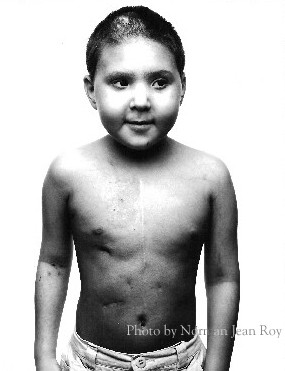
I found what I had originally written. Here it is. You were still alive.

July 17, 2001
In October my wife, Laurie and I will have our third child. Even though all three were conceived naturally, we have a significant number of embryos in frozen storage on the Upper East Side courtesy of nine in vitro fertilization cycles. As far as we know, ours may well be the largest personal cache of embryos anywhere. As chronicled in the New York Times Sunday Magazine cover story on July 1, we attempted IVF so often because we were trying to have another child who was free of Fanconi anemia (FA), the deadly genetic disease we had passed to our first son, Henry. We were also trying to guarantee a perfectly matched bone marrow donor for the transplant that Henry so desperately needed.
The remarkable science that allows families to identify and implant healthy embryos through IVF is called Pre-implantation Genetic Diagnosis (PGD). PGD is a godsend to parents like my wife and me who are carriers of genetic disease and want to have healthy children while avoiding any prospect of abortion. Naturally, PGD is only available to us now because of past research performed on human embryos.
The science of PGD has been pushed to the point where it can also identify an embryo that would be the best stem cell donor for its sibling. The application of this science is in its early stages but holds tremendous promise for all children suffering from diseases that can be treated with a stem cell transplant, like leukemia. If we had become pregnant with a healthy genetic match though IVF, then our doctors could have painlessly taken stem cells from the baby's umbilical cord at birth to cure his or her older brother's bone marrow failure and save Henry's life. Unfortunately, we were unsuccessful and Henry's deteriorating health forced us to undertake his transplant one year ago using a less desirable unrelated bone marrow donor. Henry is alive today but clinically has suffered so much more - spending a year in and out of the hospital, enduring invasive lung, brain, liver and skin biopsies - than if he had received stem cells from a genetically matched sibling. Although time ran out for us, further research on embryos will improve the success rate for all of the families coming after us hoping to use PGD to have healthy children who are also well-matched stem cell donors for sick siblings. Fortunately, we are in a position to help.
Now that Laurie and I are done baby making, we asked The Center for Reproductive Medicine and Infertility at the New York Presbyterian Hospital - Weill Medical College of Cornell University to send us its "Embryo Disposition Consent" form. The consent form came in the mail today and unlike the other medical related decisions we have had to make over the past five-and-one-half years of Henry's chronic illness, this one did not require much thought. The document details three clear choices, (1) donate our embryos to a married couple trying to have children, (2) thaw and dispose, or (3) donate them for research.
After Henry's transplant we did try one more IVF attempt, a "frozen" cycle, to have the third child we have always wanted. Embryologists at Cornell had to thaw 19 of our healthy embryos just to get three that would thrive enough for transfer. After these 3 were implanted in Laurie's uterus but failed to grow, we knew that the remaining 60 or so embryos still preserved represented a tremendous opportunity to make medical advances, not babies. Embryonic stem cell research improved the science of bone marrow transplantation and is responsible for saving Henry's life. And while stem cells extracted from embryos hold the promise of a cure for Alzheimers, Parkinson's and diabetes, we should not forget that research using embryos is also critical to the treatment of infertility, pregnancy loss, genetic disease and cancer. Today as we check the box with our preference to donate these embryos, so precious not for the lives they might become but for the lives they might save, we are understandably concerned about the current uncertainty over federal support for embryo research.
When their daughter Robin died almost 50 years ago at age three of leukemia, George and Barbara Bush lost the same heartbreaking fight Laurie and I have fought for the past 5 years. If Robin had come into the world today, medical advances partly born out of research conducted on human embryos could potentially save her life. Continued embryo research provides hope where there once was none. Robin's brother, our president, can honor her memory by supporting a federal role in embryo research. He made the case so strongly in his inaugural address; "We must show courage in a time of blessing by confronting problems instead of passing them on to future generations. Where there is suffering, there is duty. Americans in need are not strangers; they are citizens, not problems, but priorities. And all of us are diminished when any are hopeless."
Clearly, in this time of blessing it is critical that President Bush does his duty and provides hope to families suffering from illness and chronic disease by authorizing funding and oversight of embryo research. All Mr. Bush needs to do is to look as far as his own family to see that this is a priority, not a problem.


No comments:
Post a Comment